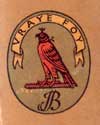Thu 16 Mar 2006
Crichton and Climate Change
Posted by boz under Books , ScienceComments Off on Crichton and Climate Change
I must have missed something when I went to hear Michael Crichton give a talk a few months ago. I didn’t think he really hit on anything I took as controversial. He did touch on global warming, but I didn’t come away with the idea that he didn’t believe it was happening; at worst he thought it wasn’t happening as much as the “media hype”. He focused more on complexity and complex systems. I need to go back and listen to his talk again. Or, I can just read his talk, since a copy is on his website. I do know that while he mentioned his book a few times, he didn’t focus on it.
What made me think of this and resolve to find the time to read his book, “State of Fear”, (hey, I have a copy already) was something I read in Locus: “‘State of Fear’ – which denies the existence of global warming – received a journalism award from the American Association of Petroleum Geologists“. Sheesh! Global warming does exist, as any rational person will agree. There’s a big difference between denying the existence of global warming, and debating the amount of warming. The National Academy of Sciences states unequivocally in it’s report (see summary):
Greenhouse gases are accumulating in Earth’s atmosphere as a result of human activities, causing surface air temperatures and subsurface ocean temperatures to rise. Temperatures are, in fact, rising. The changes observed over the last several decades are likely mostly due to human activities, but we cannot rule out that some significant part of these changes is also a reflection of natural variability. Human-induced warming and associated sea level rises are expected to continue through the 21st century. Secondary effects are suggested by computer model simulations and basic physical reasoning. These include increases in rainfall rates and increased susceptibility of semi-arid regions to drought. The impacts of these changes will be critically dependent on the magnitude of the warming and the rate with which it occurs.


